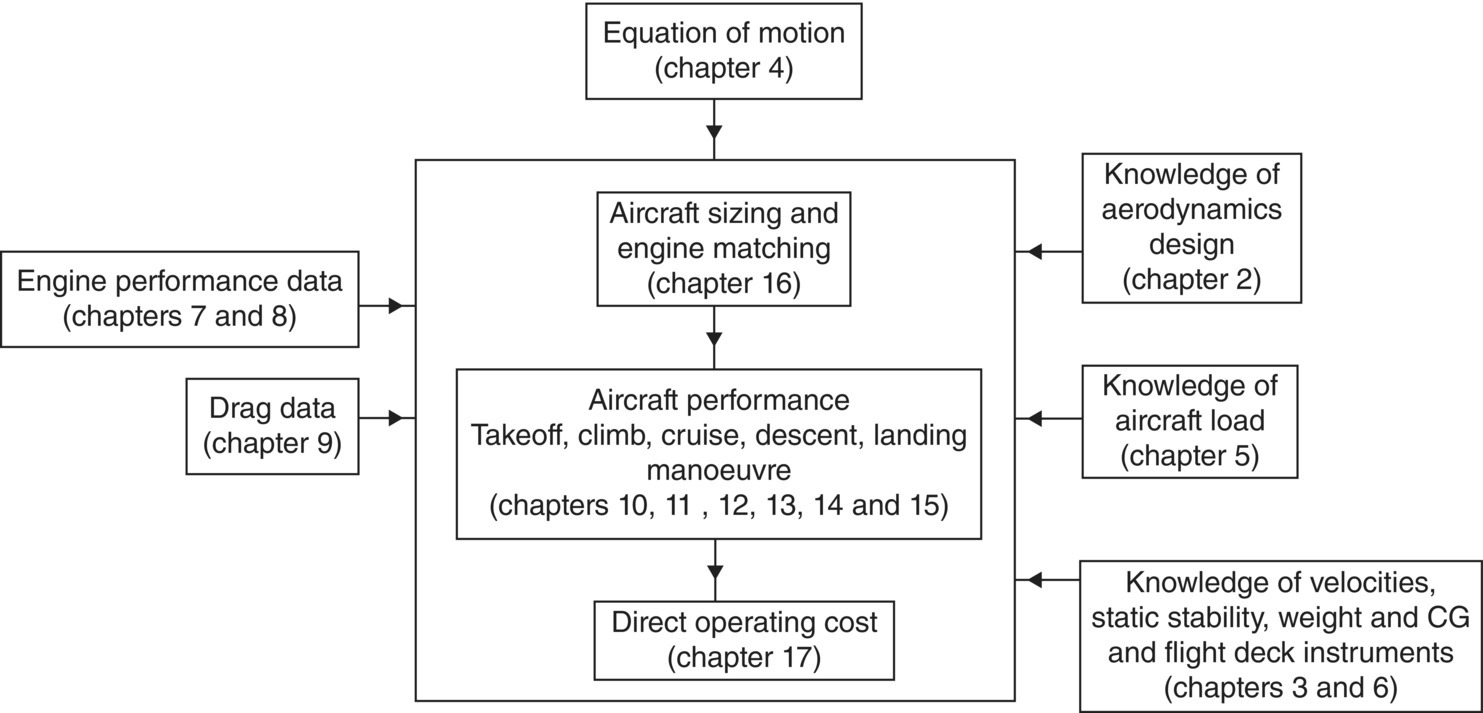Road Map of the Book
Organization
In a step‐by‐step manner, I have developed a road map to learning industry standard aircraft performance methodology that can be followed in classrooms. Except for Chapter 1, the book is written in formal third‐person grammatical usage. The chapters are arranged quite linearly, and there is not much choice in tailoring a course. While the course material progresses linearly, the following diagram depicts how the topics are interlinked.

Chapter 1 introduces some background material to prepare readers on the scope of aeronautical engineering. It gives broad coverage of some historical perspective, future trends, role of marketing, project phases from conception to completion, role of airworthiness requirements, and some miscellaneous topics. The main purpose of this chapter is to motivate readers to explore and learn about aircraft.
Chapter 2 covers atmosphere, aircraft aerodynamics and design considerations that influence aircraft performance and must be known to the engineers. This is the only chapter that could be browsed, as these topics are normally covered separately in academies. Chapter 3 introduces the definitions of various kinds of aircraft velocities, related topics on static stability, and some related flight deck instruments. The equations of motion for a flat stationary Earth are derived in Chapter 4, and classroom work starts ...
Get Theory and Practice of Aircraft Performance now with the O’Reilly learning platform.
O’Reilly members experience books, live events, courses curated by job role, and more from O’Reilly and nearly 200 top publishers.

